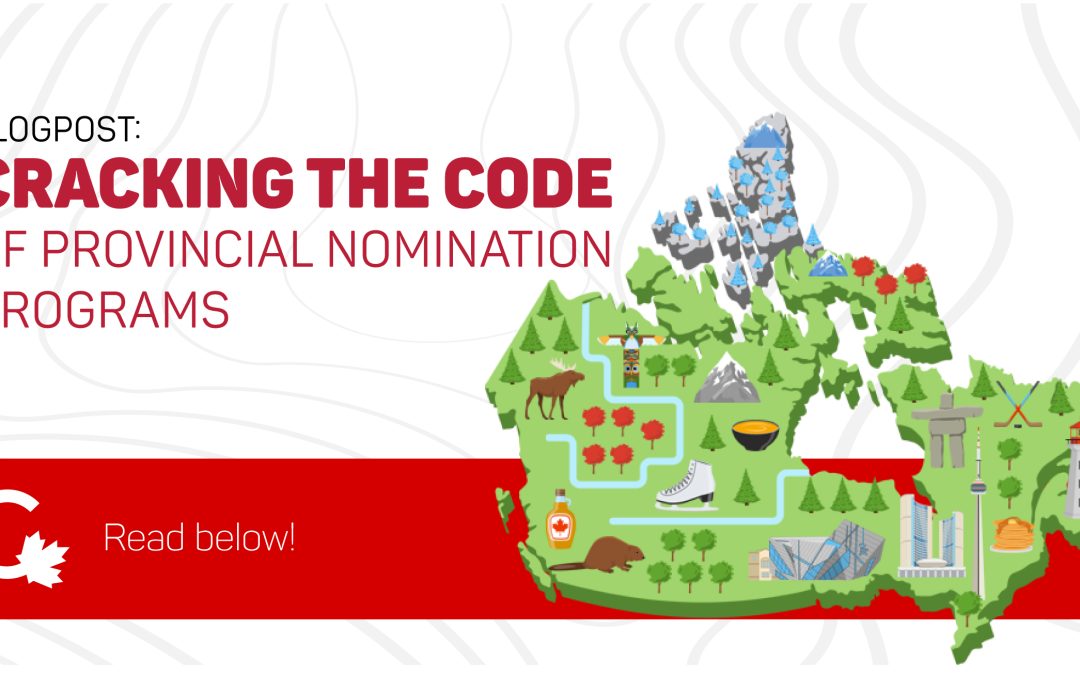
Sep 18, 2023 | Blog, Express Entry, Federal Skilled Trades, Immigrate to Canada, Immigration, In the News, New Immigration Programs, New Laws, Provincial Nominee Program, Skilled Workers, Temporary Foreign Workers, Work Permits, Working In Canada
Canada launches new Express Entry for transport workers under a new category-based selection process to invite skilled newcomers with work experience in the transport sector to apply for permanent residence. This includes occupations such as commercial truck drivers, pilots, and aircraft assembly workers.
The IRCC announced that the first round of invitations for transport occupations through category-based selection in Express Entry will occur this week.
The new process will help to address labour shortages in the transport sector and support Canada’s economic growth. Category-based selection will allow Canada to invite candidates with the specific skills and experience that are needed to fill key positions.
Canada’s Express Entry system is now tailored to provide a streamlined and efficient pathway for individuals with expertise in critical fields. By prioritizing the invitation of skilled newcomers with work experience in transport occupations, Canada aims to meet the increasing demand for talent and fill key positions that contribute to the nation’s economic growth and advancement.
Category-based selection rounds will continue throughout the year, alongside general and program-specific invitation rounds.
Quotes:
“As Canada grows its economy, we’re committed to improving transport and infrastructure to ensure the safe and efficient movement of goods and passengers across the country. Category-based selection helps us invite newcomers with experience in transport occupations to fill significant labour gaps and ensure the future success of the Canadian transport sector. I look forward to welcoming more skilled workers to our country, as their knowledge and expertise are invaluable, to meet our labour market needs.”
– Marc Miller, Minister of Immigration, Refugees and Citizenship
“The transportation sector is crucial to our economy, and if we want to keep things moving, we need to invest in the people that move travellers and transport our goods. With this new initiative, we are helping address a critical skills shortage while also attracting new, talented people to communities across Canada. Truck drivers, pilots, aviation mechanical engineers and seafarers play a critical role in our economy and Canadians’ lives. Filling vacancies in these professions will boost economic growth and create stronger and more resilient supply chains.”
– Pablo Rodriguez, Minister of Transport
Quick facts:
- Express Entry is Canada’s flagship application management system for those seeking to immigrate permanently through the Federal Skilled Worker Program, the Canadian Experience Class, the Federal Skilled Trades Program, and a portion of the Provincial Nominee Program.
- In June 2022, the Government of Canada made changes to the Immigration and Refugee Protection Act to allow for the selection of immigrants based on key attributes that support economic priorities, such as specific work experience or knowledge of French.
- On May 31, 2023, the Honourable Sean Fraser, former Minister of Immigration, Refugees and Citizenship, announced the launch of category-based selection, a new process to welcome skilled newcomers with work experience in priority jobs as permanent residents.
- The categories were determined following extensive consultations with provincial and territorial partners, stakeholders, and the public, as well as a review of labour market needs. A complete list of eligible jobs for the new categories is available on the Canada.ca website.
(more…)

Aug 9, 2023 | Blog, Canadian Employers, Immigration, In the News, New Immigration Programs, New Laws, Skilled Workers, Temporary Foreign Workers, Working In Canada
In a move aimed at simplifying the process of hiring temporary foreign workers, the Canadian federal government is introducing the “Recognized Employer Pilot” program. This initiative seeks to reduce bureaucratic hurdles for employers and provide a streamlined path for bringing in foreign workers. However, as this program unfolds, experts and advocates are raising important questions about the program’s scrutiny measures, potential economic implications, and its impact on Canadian society.
The Recognized Employer Pilot: A Breakdown
Streamlining the Hiring Process
The Recognized Employer Pilot program, set to launch in September, is poised to revolutionize the way Canadian employers engage temporary foreign workers. Initially targeting the agriculture sector, the program will later extend to all industries in January. Eligible employers with a strong history of compliance with program requirements will receive a three-year permit to bring in foreign workers without the need for frequent reapplications.
“The Recognized Employer Pilot will cut red tape for eligible employers, who demonstrate the highest level of protection for workers, and make it easier for them to access the labour they need to fill jobs that are essential to Canada’s economy and doof security”
Addressing Concerns and Enhancing Protections
However, with this shift comes valid concerns about the level of scrutiny these workers will receive and the economic landscape they will enter. As Canada grapples with challenges such as housing affordability, rising interest rates, and high inflation, critics are urging a closer look at the conditions foreign workers will face.
The Current Scenario: Temporary Foreign Worker Program
Presently, employers must undergo a labor market impact assessment (LMIA) each time they hire foreign workers under the Temporary Foreign Worker Program. This assessment ensures that a genuine need exists for filling the position. In recent years, the number of approved temporary foreign worker positions has surged, from approximately 89,000 in 2015 to over 221,000 in the last year. This doesn’t account for international students, graduates with open-work permits, and mobility agreements with various countries.
The Shift Towards Recognized Employers
The Recognized Employer Pilot promises to alleviate administrative burdens for qualified employers. These are employers who can demonstrate a robust commitment to worker protection. The program aims to simplify labor access for vital roles within Canada’s economy and food security. Employment Minister Randy Boissonnault highlights the program’s budget of $29.3 million over three years and asserts that the application process will be rigorous, targeting employers with exemplary recruitment practices.
Balancing Opportunity with Responsibility
Worker Protections and Social Impact
The growing reliance on foreign workers, though addressing labor shortages, is not without its challenges. Workers in low-skill, low-wage positions have reported abuses and exploitation by employers. Critics argue that without thorough oversight, such abuses could continue to persist, even within the trusted employer framework. The flexible labor force facilitated by these initiatives may strain housing markets, healthcare accessibility, and education systems.
Syed Hussan, executive director of Migrant Workers Alliance for Change, emphasizes that the effectiveness of the Recognized Employer Pilot hinges on the scrutiny of employers. He raises concerns about workers’ reluctance to complain due to potential reprisals. While the government has taken steps to protect migrant workers, further vigilance is necessary to ensure their rights and well-being.
Conclusion: Toward a Balanced Approach
In a bid to bolster Canada’s workforce and ensure essential services, the Recognized Employer Pilot program offers a unique pathway for employers to hire temporary foreign workers. While this move is promising, it also calls for a careful balance between streamlining processes and safeguarding worker rights. The success of this program lies in the implementation of stringent scrutiny measures and ongoing efforts to protect the well-being of all workers involved.
(more…)

Apr 17, 2023 | Blog, Complete Representation, Express Entry, Family Immigration, How To, Immigrate to Canada, Immigration, New Immigration Programs, Permanent Residency, Preparation of Application, Provincial Nominee Program, Skilled Workers, Temporary Foreign Workers
Understanding Provincial Nomination Programs in Canada: Eligibility Requirements and Differences
Canada is known for its warm hospitality and has a range of opportunities for foreign nationals to call it their permanent home. One such opportunity is through the Provincial Nominee Program (PNP), which allows Canadian provinces and territories to nominate foreign workers, entrepreneurs, and graduates for permanent residency. Each province and territory has its own unique PNP, with distinct eligibility requirements and selection criteria. To better understand the different eligibility requirements for these programs and how they differ from one another, read on.
What is a Provincial Nomination Program?
A Provincial Nomination Program (PNP) is a program designed to allow Canadian provinces and territories to select and nominate foreign nationals who are interested in settling in their region. PNPs were created to help address regional labor market shortages and attract talented individuals to Canada’s different provinces and territories.
Eligibility Requirements for Provincial Nomination Programs
The eligibility requirements for PNPs differ from province to province, but in general, they require candidates to have the following:
- Education and Language Proficiency: Most PNPs require candidates to have completed at least a high school education and to have demonstrated proficiency in either English or French, Canada’s official languages.
- Work Experience: PNPs require candidates to have a certain amount of work experience in their occupation, which varies by province and occupation.
- Age: PNPs typically target younger individuals who are likely to contribute to the labor market and the community for many years. The minimum age for PNPs is usually 18 years old, but some provinces require candidates to be between 21 and 45 years old.
- Job Offer: Most PNPs require candidates to have a job offer from an employer in the province. The job offer must be in an occupation that is in demand in the province.
- Adaptability: PNPs consider factors such as previous education or work experience in the province, family or friends in the province, and language skills in addition to the minimum eligibility requirements.
How do PNPs differ from each other?
PNPs differ from each other in terms of the eligibility requirements, the selection process, and the categories of candidates they target. Here are some of the main differences:
Eligibility Requirements:
Each province has its own set of eligibility requirements for PNPs. For example, the British Columbia PNP requires candidates to have a job offer in a skilled occupation, while the Saskatchewan PNP allows candidates without a job offer to apply for the program.
Selection Process:
PNPs use a point-based system to evaluate candidates based on factors such as education, work experience, age, language proficiency, and adaptability. However, the point system and selection criteria vary by province and can change over time.
Categories of Candidates:
Each PNP has its own categories of candidates, such as skilled workers, international graduates, entrepreneurs, or semi-skilled workers. Some PNPs prioritize certain categories over others, depending on the needs of the province.
Conclusion
In conclusion, Provincial Nomination Programs (PNPs) are an excellent way for foreign nationals to immigrate and settle in Canada. However, the eligibility requirements for PNPs differ by province, and candidates must carefully evaluate their eligibility before applying. It is essential to consult with an immigration consultant or lawyer to determine which PNP is the best fit for your qualifications and career aspirations. By understanding the different eligibility requirements and selection criteria for PNPs, candidates can increase their chances of being nominated and achieving their dream of living and working in Canada.

Apr 23, 2020 | Featured, In the News, Permanent Residency, Temporary Foreign Workers, Tourist Visas, Work Permits
On Wednesday April 22, United States President Donald Trump signed the executive order to suspend immigration into the United States in hopes to prioritize the re-hiring of Americans displaced by the novel Coronavirus. The difference? Canada is still open to immigrants and accepting applications. The new U.S. immigration suspension will last for 60 days and will be reevaluated and extended if deemed necessary.
Foreign nationals who are outside of the United States and are seeking permanent residency (commonly called “green card”) will not be able to apply. It’s important to note that foreign nationals who are already in the United States are exempt from the suspension and will be able to adjust their status or extend their stay.
Children and spouses of U.S. citizens fall into the exemption of the suspension and may continue with their plans to submit their applications for a Green Card. Other foreign nationals such as temporary works in essential positions such as medical personnel, members of the Armed Forces and law enforcement, prospective adoptees are also exempt.
Canada remains wide open and accepting applications of all kinds
Immigration, Refugees and Citizenship Canada (IRCC) is not immune to the Coronavirus situation. However, they have not stopped accepting applications, despite the skeleton shift and reduced number of visa officers.
Applications can be submitted even if they are incomplete
While the Canadian immigration department has slowed down processing, foreign nationals who are considering applying for permanent residence may still submit their applications. Given that many required services are closed, such as the English testing centres (IELTS, CELPIP), credential evaluation services (WES, and several others), including biometrics centres around the world, Canada will accept incomplete applications. Applicants may submit their applications and will be allowed to submit the missing documentation at a later date.
Extend your status and remain in Canada longer
Individuals who are currently in Canada and wish to apply for an extension of their visitor status, work permit or study permit may do so, and may remain in Canada on “implied status” until a decision is made on the application to extend their stay.
Pause on the processing of non-essential visitor visa applications
To combat processing delays on essential applications such as family reunification, some urgent work permit applications and extensions, Canada has announced that they will not process visitor visa applications for non-essential travel.
Do you need help to stay in Canada? Are you planning to submit your application for permanent residence or family immigration application?
Our skilled and professional team of immigration consultants are here to assist you overcome the hurdle during this uncertain time. Our immigration representatives are up-to-date in all aspects of immigration, including the unprecedented situation surrounding COVID-19 and can help you navigate through the system properly.
We are here for you. Call us today 416-665-3939 or 1-888-808-7338.

Jun 18, 2019 | Caregiver Program, Complete Representation, Featured, Immigrate to Canada, In the News, New Immigration Programs, New Laws, Temporary Foreign Workers, Work Permits, Working In Canada
New Caregiver Programs take effect today. Immigration, Refugees and Citizenship Canada (IRCC) has made changes to the In-Home Caregiver Program. These changes affect how employers hire caregivers and what is required as part of the approval process for both employers and caregivers. As of June 18, 2019 employers who are hiring caregivers from overseas are no longer required to submit an Labour Market Impact Assessments (LMIA) application for approval. Any LMIA application that was submitted on or before June 17, 2019 will continue to be processed and work permits for those caregivers will still continue to process as well. Caregivers who are currently in Canada on work permits that require extensions or those that are changing employers will require new LMIAs and new work permits.
There are now 2 new caregiver streams to consider when applying to hire a caregiver from overseas. Employers should consider starting early as it is expected to take about 12 months for a caregiver to arrive in Canada on a work permit.
Home Child Care Provider pilot (NOC 4411)
Home Support Worker pilot (NOC 4412)
General Program Requirements for Employers and Caregivers
- Employers will need to complete the job offer form
- Caregivers will need to submit an application for permanent residence along with a work permit application
- Caregivers can also apply for their spouses and children to accompany them to Canada and can obtain open work permits and study permits
- Caregivers must meet the eligibility criteria before applying for permanent residence, if eligible they will receive work permits to come to Canada
- Work permits will be valid for 3 years and will give the caregiver the opportunity to complete 24 months of full-time work as a caregiver
- Processing time can take up to 1 year for work permits to be issued.
- After the caregiver completes 24 months of work he/she will need to submit proof and their PR application will be finalized.
These new applications will require careful preparation by an authorized representative. It is strongly recommended that caregivers hire an authorized representative to ensure that their application will qualify and that they will achieve their goal of work permits and then eventually permanent residency in Canada.
For all inquiries, questions or concerns regarding these changes, please give us a call at +1-416-665-3939 or from inside Canada toll-free 1-888-808-7338.

Jul 26, 2017 | Business Immigration, Canadian Employers, In the News, Processing Times, Temporary Foreign Workers, Work Permits, Working In Canada
The Global Talent Stream allows highly skilled workers in certain occupations to receive a temporary work permit in two weeks or less. This new option was announced just a few weeks ago as a pillar of Canada’s Global Skills Strategy, which aims to help innovative companies grow by ensuring they can quickly access the highly skilled talent they need.
This initiative is equally beneficial for Canadian businesses and foreign workers. With two-week-work permit processing, companies are able to fill open positions quickly by hiring foreign talent just as fast as they might hire local talent. The two-week processing also applies for an open work permit for a spouse and study permit for dependent children of the primary applicant. Thus, individuals and their families are able to fast track the application process and begin working much quicker than ever before.
The Global Talent Stream is just one of many options available for temporary foreign workers. Thus, it gives Canadian employers the opportunity to select which of the many work permit options works best for their company and its workforce.
There are two categories of the Global Talent Stream. Category A is available for booming businesses that have been referred by an Employment and Social Development Canada (ESDC) Designated Partner. A list of partners was released on June 12, 2017 and can be found below. These businesses are required to commit to creating jobs for Canadians, either directly or indirectly. Employers who seek to hire foreign workers in one of the designated high-skill occupations fall under Category B. These businesses must commit to increasing investments in skills and training for Canadians. Working in collaboration; the government, labour market experts, and key stakeholders have come up with the following list of eligible occupations.
List of Partner Organizations for Category A
- Atlantic Canada Opportunities Agency
- BC Tech Association
- Business Development Bank of Canada
- Communitech Corporation
- Council of Canadian Innovators
- Federal Economic Development Agency for Southern Ontario
- Global Affairs Canada’s Trade Commissioner Service
- ICT Manitoba (ICTAM)
- Innovation, Science and Economic Development Canada – Accelerated Growth Service
- MaRS Discovery District
- National Research Council – Industrial Research Assistance Program
- Ontario Ministry of Citizenship and Immigration
- Ontario Ministry of Economic Growth and Development
- VENN Innovation
Eligible National Occupation Classification (NOC) Codes for Category B
(This list is subject to change based on labor market demands)
- 0213 Computer and Information Systems Managers
- 2147 Computer Engineers (except software engineers and designers)
- 2171 Information Systems Analysts and Consultants
- 2172 Database Analysts and Data Administrators
- 2173 Software Engineers and Designers
- 2174 Computer Programmers and Interactive Media Developers
- 2175 Web Designers and Developers
- 2241 Electrical and Electronics Engineering Technologists and Technicians
- 2283 Information Systems Testing Technicians
- 5241 Digital Media and Design
Requirements for Businesses and Workers Applying Under Global Talent Stream
Along with the above minimum requirements, businesses wishing to bring in foreign workers under either category of the Global Talent Stream must commit to two additional benefits including, but not limited to, the following: creating jobs, investment in skills and training, transfer of knowledge to Canadians, and improving company performance. Businesses may meet this requirement in any of the following ways: hiring more Canadians, training existing employees in new methods, forming paid internship programs for local students, and increasing revenue and investments. Employers are also required to pay their foreign workers the prevailing wage or higher.
Applicants who are interested in priority processing of their work permit applications must meet the minimum eligibility requirements of the Global Talent Stream. Applications must be made online on or after July 12 and must come from outside Canada. Two-week processing does not apply to applications made from within Canada, although these applicants are able to maintain implied status if applying to do the same work under the same conditions as their initial work permit.
Our team of immigration consultants can help you determine your eligibility and prepare your work permit application. To find out if you qualify for expedited processing of your work permit application, contact us to discuss your options.
If you are employer looking to hire foreign workers to fill labour shortages, click here to find out more.







 Useful Resources for Canada
Useful Resources for Canada
 Useful Resources for U.S.
Useful Resources for U.S.
 Our Local Immigration Services
Our Local Immigration Services